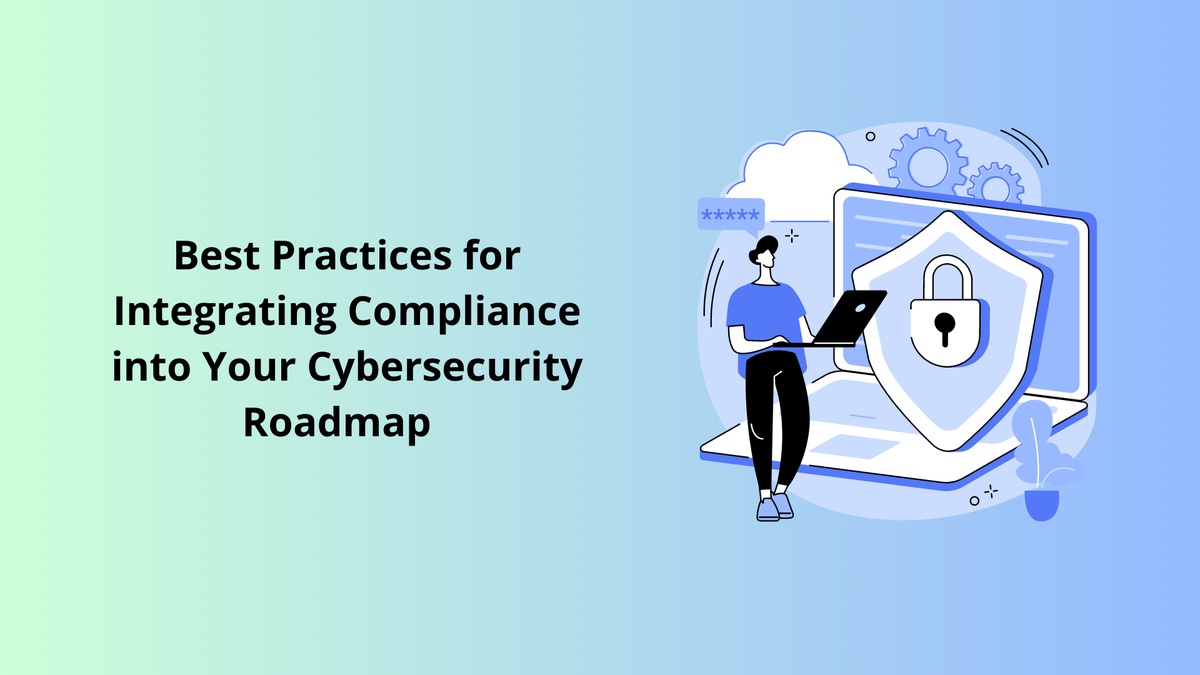Cyber threats continue to grow in today's digital world, posing significant hazards to organisations of all sizes. A solid Cybersecurity Roadmap is essential for organisations to handle these risks proactively, preserve critical data, and defend their brand. However, cybersecurity cannot be separated from compliance obligations. Integrating compliance into your Cybersecurity Roadmap guarantees that your security measures align with legal and regulatory requirements, strengthening your defence against cyber attacks. This blog will look at the best practices for including compliance in your Cybersecurity Roadmap to develop a thorough and successful security plan.
Table of Contents
- Assessing Compliance Requirements
- Aligning Security Objectives with Compliance
- Building a Risk-Based Approach
- Regular Compliance Audits and Assessments
- Training and Awareness Programs
- Incident Response and Compliance
- Secure Third-Party Relationships
- Regular Updates and Adaptations
- Monitoring and Reporting
- Conclusion
Assessing Compliance Requirements
The first step in incorporating compliance into your Cybersecurity Roadmap is to review applicable compliance obligations thoroughly. Determine which laws, rules, standards, and frameworks apply to your sector and business processes. GDPR, HIPAA, ISO 27001, NIST Cybersecurity Framework, and PCI DSS are examples of common compliance frameworks. Understanding these requirements will lay the groundwork for developing your cybersecurity plan.
Aligning Security Objectives with Compliance
Once your compliance requirements have been defined, match your security goals with these standards. Your Cybersecurity Roadmap should include details on how your security measures satisfy specific compliance needs. If GDPR applies to your organisation, your roadmap should consist of how you manage data protection, breach notifications, and data subject rights to comply with GDPR requirements.
Building a Risk-Based Approach
Effective cybersecurity requires a risk-based strategy. Examine your organisation's risk landscape, including possible cyber threats, vulnerabilities, and implications on compliance. Based on these risk assessments, prioritise your security activities to ensure that your Cybersecurity Roadmap targets the most significant areas of concern.
Regular Compliance Audits and Assessments
Integrating compliance into your Cybersecurity Roadmap should involve frequent audits and assessments to evaluate the efficiency of your security measures. Conduct internal and external audits to discover security holes and ensure compliance with applicable legislation. Regular assessments aid in identifying areas for improvement and allowing you to take remedial steps as soon as possible.
Training and Awareness Programs
Employees are critical to cybersecurity and compliance operations. Educate your team on cybersecurity best practices and compliance needs through frequent training and awareness programmes. Employees should be well-informed about their roles in protecting sensitive data and preventing security breaches.
Incident Response and Compliance
A robust incident response strategy that conforms with compliance standards must be included in your Cybersecurity Roadmap. To satisfy regulatory duties, define the procedures for recognising, reporting, and mitigating security events. Implement a written incident response plan to ensure that possible breaches are handled promptly and compliant.
Secure Third-Party Relationships
If your company works with third-party suppliers or partners, their security practices may influence compliance. Examine your vendors' cybersecurity practices and incorporate rules for secure third-party connections in your Cybersecurity Roadmap. Require vendors to follow particular security requirements and comply with applicable regulations.
Regular Updates and Adaptations
Cyber risks and compliance standards are constantly changing. Your Cybersecurity Roadmap should be dynamic and updated frequently to account for these developments. Keep current on emerging threats, compliance standards, and industry best practices. Adapt your cybersecurity plan to address the changing cyber risk scenario.
Monitoring and Reporting
To achieve cybersecurity compliance, monitoring and reporting are essential. Implement procedures and technologies to continuously monitor your security environment and gather data for reporting needs. To show how committed your company is to protecting sensitive data, provide frequent updates on the effectiveness of your compliance and cybersecurity initiatives.
Conclusion
A thorough and effective security plan can only be developed with incorporating compliance into your cybersecurity roadmap. Your business may improve its defence against cyberattacks while adhering to regulatory requirements by integrating security goals with compliance requirements, adopting a risk-based strategy, carrying out routine audits, and developing efficient incident response plans. A robust compliance-oriented security posture must include regular training and awareness programmes, secure third-party connections, and ongoing cybersecurity plan enhancements. It's important to remember that cybersecurity and compliance go hand in hand, and an adequately integrated strategy guarantees that your organisation's data, reputation, and consumer confidence are protected against ever-evolving cyber threats.


No comments yet